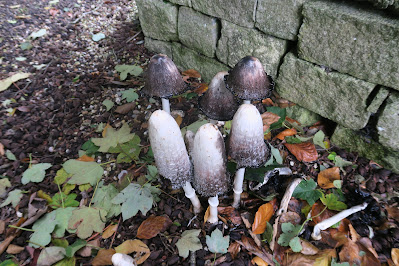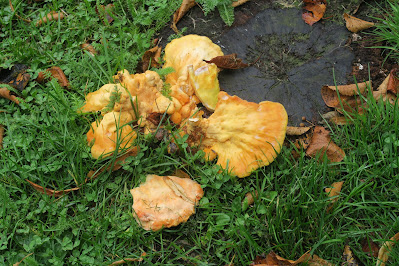 |
| Shaggy Inkcaps. Photo. John Elliott |
Shaggy Inkcap, Coprinus comatus, a common species, has occured for a second year on the way down to Ashton. This is regarded as one of the most edible species while the gills are still young and white. However it can be confused with the very similar Common Inkcap, Coprinus altramentarius which must never be consumed with a meal accompanied by alcohol, as it will cause vomiting and palpitations. The fruit bodies contain a substance similar to Antabuse, a drug used in aversion therapy for alcoholics.

